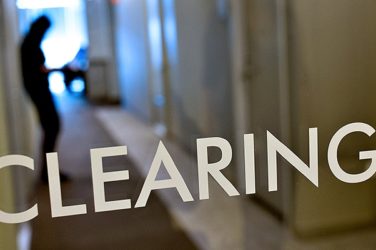
With the expectation that most interest rate and credit derivative products will be required to trade on either a swap execution or an exchange in early 2014, SEFs have been building out the nuts and bolts to support the multitrillion dollar market, such as trading systems, connections to CCPs and swap data repositories, and credit risk checks.
TeraExchange, which has registered as a SEF, currently offers trading capabilities for five asset classes–interest rate swaps, credit default swaps, non-deliverable forwards, energy and agriculture—and will add equity swaps at a later date.
“There’s no live trading, but we have many customers who are testing and will go live when we are ready to turn the switch on,” said Leonard Nuara, president and chief operating officer of Tera Exchange. “We anticipate that mandatory trading will commence early next year when the MAT [Made Available to Trade] rules take effect. A few SEFS have filed MAT self-certification, but the CFTC is reviewing those applications, which won’t be completed until February.”
The pace of rulemaking has been relatively brisk this year, with rules governing mandatory clearing and SEF trading going into effect. The deadline for SEF registration was October 2, but the Commodity Futures Trading Commission extended the compliance deadline for another month. The CFTC ruled, via Footnote 88 in its final swap core requirements, that permitted transactions (transactions that are not subject to mandatory clearing) must be traded on a SEF along with required transactions (those that are subject to mandatory clearing), as long as the platform on which they’re traded is multi-dealer.
That vastly increases the number of swap transactions, and therefore the complexity, associated with reporting to SDRs and CCPs.
“The SEF industry was caught by surprise by Footnote 88, which means that every asset they are handling, including uncleared swaps, had to be included,” said Nuara.
Futures exchanges have built CCPs to handle swaps in addition to their listed products, making clearing a substantial part of their revenue base.
“CME operates a clearing house, and they make more money from clearing than any other component of their business,” said Nuara. “So the more people trade through TeraExchange, the more they clear.”
CME Group’s volume in dealer to client cleared IRS averaged $81 billion per day in the third quarter, doubling the activity from the second quarter 2013. So far, the fourth quarter is up 26% sequentially to $102 billion.
“Now that the three waves of the Dodd-Frank clearing mandate are behind us, the market is shifting from a compliance phase to an optimization phase,” said Phupinder Gill, president of CME Group, during the company’s earnings call last week. “With increasing client demand for greater capital efficiencies, we now have six clearing members live with portfolio margining of cleared OTC interest rate swaps and interest rate futures, including a few who started offering this solution to customers within the last month.”
Tera Exchange has created both central limit order book and RFQ trading mechanisms, as well as a credit checking facility and an EMS. “You can trade in swaps as well as related futures contracts such as Eurodollar or Treasury futures,” said Nuara.
The marketplace for OTC swaps has a notional value of $650 trillion, dwarfing those of futures and equities. “The participant space is all institutional, so these are big players—hedge funds, asset managers, GSEs—anyone who has to hedge their interest rate portfolio. From an industry perspective, this is a brand new market,” he said.




